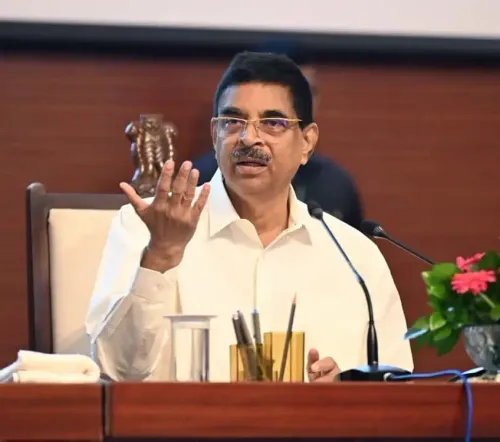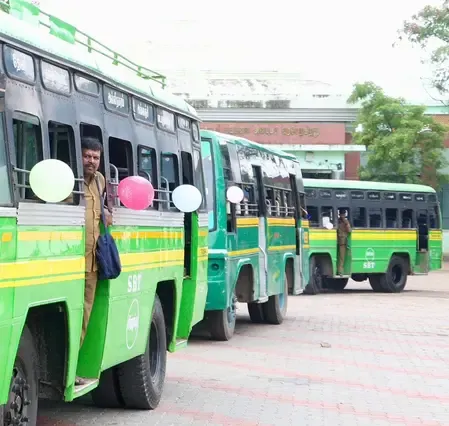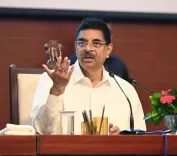Is the Government's Focus on Indigenous Defence Production and Self-Reliance Enough?

Synopsis
Key Takeaways
- India's defense manufacturing has shifted to 65% domestic production.
- Ambitious goals include achieving total self-reliance by 2029.
- Defense exports have increased significantly, showcasing growth.
- Collaboration is essential for advancing defense technology.
- New technologies like AI and drones are shaping future warfare.
Nashik, Oct 17 (NationPress) Defence Minister Rajnath Singh emphasized the significant shift in India’s defense landscape. Once reliant on foreign nations for defense needs, with 65-70% of equipment sourced externally, India now proudly manufactures 65% of its defense equipment domestically. “This situation is evolving, and we aim for complete self-reliance soon,” he stated.
His remarks were made during an event organized by Hindustan Aeronautics Limited (HAL) in Nashik, where he inaugurated the third production line for the Tejas Mk1A and the second line for the Hindustan Turbo Trainer-40.
“India’s journey towards self-reliance in defense technology over the past decade is astonishing. Items we once imported are now produced at home, including fighter jets, missiles, engines, and electronic warfare systems,” he continued.
The Defense Minister underscored that the concept of self-reliance isn’t new, stating, “For the last 10 years, under Prime Minister’s leadership, the NDA government recognized that true security hinges on self-sufficiency.” He highlighted the Tejas Mk1A project as a significant step in this direction, reducing dependency on imports while promoting indigenization.
He also noted the leap in defense exports, which skyrocketed from under Rs 1,000 crore to Rs 25,000 crore. The goal is to reach Rs 3 lakh crore in domestic manufacturing and Rs 50,000 crore in exports by 2029.
In terms of production, “From Rs 46,429 crore in 2014-15, we project defense production to surpass Rs 1,46,000 crore by 2024-25. These figures represent our nation’s quest for self-reliance,” he remarked.
Rajnath Singh mentioned the collaborative efforts among industry partners in constructing the LCA Tejas and HTT-40 aircraft, stating, “This collaboration showcases the power of unity among government, industry, and academia.”
“We must expand beyond just LCA Tejas or HTT-40; it's time to establish our mark in next-generation aircraft, unmanned systems, and civil aviation,” he said, expressing confidence in HAL Nashik's future role.
He asserted, “This new initiative will create thousands of job opportunities in Nashik and nearby regions, empowering the industrial ecosystem of Maharashtra and adjacent states.” He paid tribute to the brave Indian Air Force personnel who trust in indigenous aircraft like Tejas and HTT-40.
Regarding advanced defense technology, Rajnath Singh explained, “It encompasses more than just machinery; it reflects our intellect, capabilities, and confidence.”
He remarked on India's strengthened position in space and the rapid growth of the Aerospace industry. Under the 'Make In India' initiative, efforts to bolster local manufacturing and aerospace equipment production are underway. He noted that the landscape of warfare is evolving, with technologies like artificial intelligence, cyber warfare, drone systems, and next-gen aircraft shaping the future. “India must stay ahead in this new race,” he concluded.
--ANS
sj/khz









